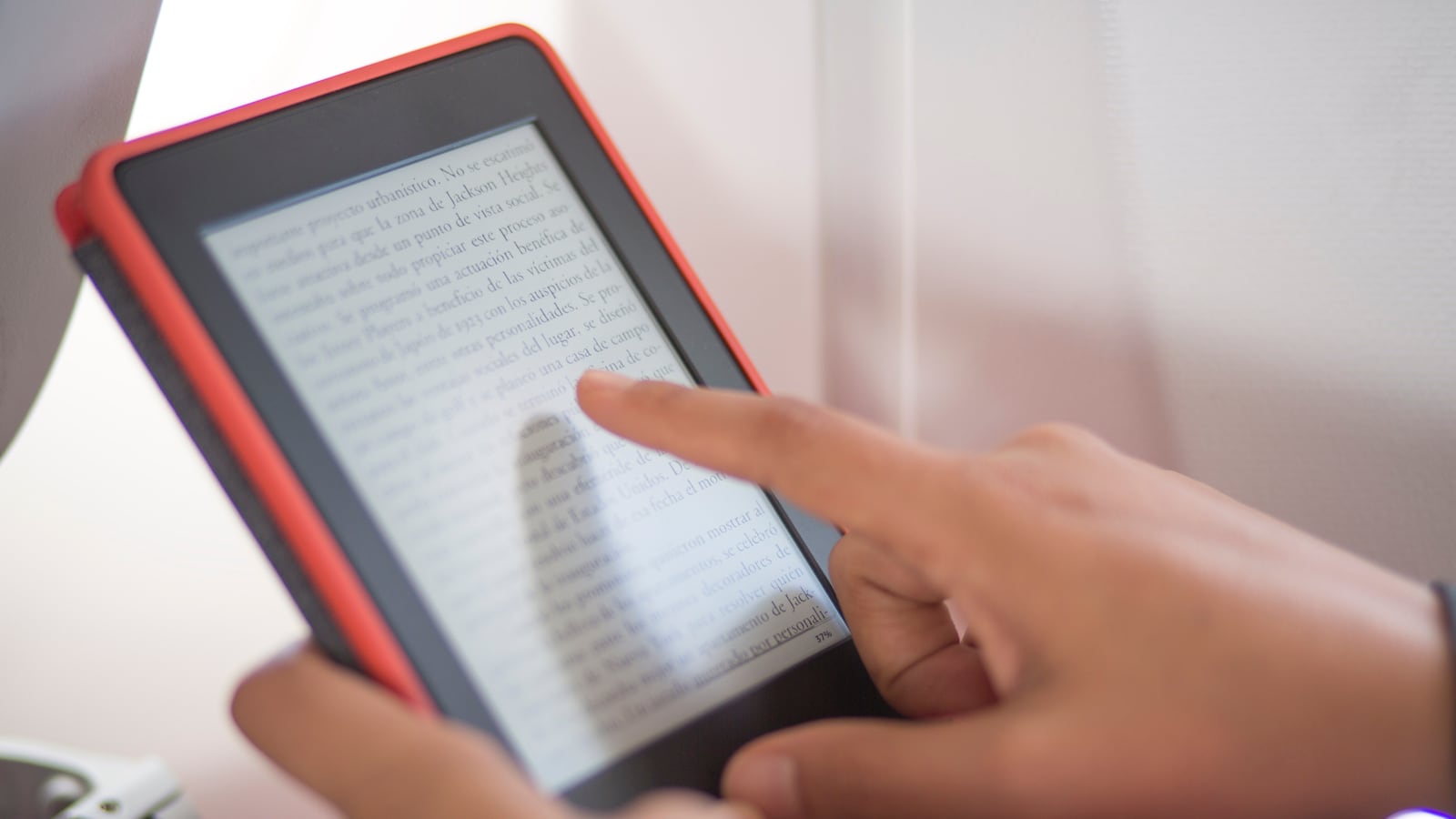I’ll admit it. I’m an old school reader. I love the print copies of books, the sleek look of the cover, the feel of the pages, the way I can mark text up with a pen, and yes, dog ear my stopping points. And I have many students just like me, who love discovering books on our school library shelves and taking them home.
But I also have many who have grown up with a tablet, digital natives get that same feeling of natural reading that I do when they fire up their Kindle or iPad.
As a high school librarian, I want to help students read as much as they can, however they prefer. Yet by limiting access and setting prohibitive prices, publishing companies make it extremely difficult to serve students who would rather read an e-book.
Here’s how things work, in a nutshell. If I buy a print copy of The Book Thief, it costs around $13 for a paperback. It can circulate endlessly to numerous users as long as the patron returns it (and doesn’t become the victim of an actual book thief).
E-books are quite different. If I’d like to purchase the e-book version of The Book Thief it costs around $45, and my students only have access to it for two years. To continue to make the book available, I would need to pay for another license.
That means the $13 print book would cost $250 for my school to offer students for a decade. And at the end of that time, my school would still have the print copy — and nothing to show for its spending digitally.
In response to predatory pricing, librarians and school librarians are buying fewer and fewer e-books or deciding not to purchase them at all. Recently, a librarian boycott of e-books took place as MacMillan, a major e-book publisher, decided to limit e-books in libraries even further by only allowing them to purchase one copy for the first two months of a published book. Only one patron can read the e-book at a time, so many libraries like to buy multiple copies for their users. MacMillan is forcing customers to buy the e-books from the company rather than obtaining them from the library.
When I was working in cash-strapped Chicago Public Schools — I was an English teacher and librarian for 15 years in the district before leaving for the suburbs — I purchased only three e-books in six years. This was when I could place them directly onto devices so they would not expire. That option is no longer available.
Now, I work at a well-funded school district with a healthy library budget. Although my co-librarian and I buy some e-books as they do circulate, we do so very sparingly as we know they will be eating up our funds much more than the print copies we purchase.
Publishing companies’ apparent notion that libraries are competitors is mistaken. First, our mission is not to make money; it is to give access to as many users as we can to fully foster and expand literacy in our communities. Second, libraries actually are among the biggest purchasers of books — but not at the prices, and under the licensing structures, that currently exist.
As much as I appreciate flipping the pages of a hard copy, I would love to embrace the digital transition that my students have made. But I don’t see a way for that to happen unless publishing companies change their pricing strategy for e-books — or regulators intervene to facilitate student access to the books they need to learn, discover, and lose themselves in a love of reading.
Gina Caneva is the library media specialist for East Leyden High School in Franklin Park, IL. She taught in Chicago Public Schools for 15 years and is Nationally Board Certified. Follow her on Twitter @GinaCaneva.

